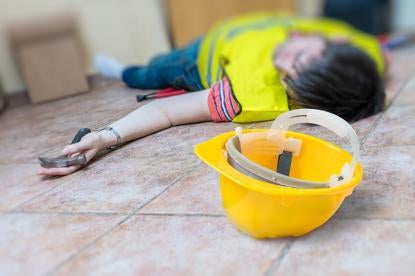On May 1, 2023, the U.S. Department of Labor (DOL) announced that its Occupational Safety and Health Administration (OSHA) launched a new National Emphasis Program (NEP) to prevent or otherwise reduce workplace falls (the “Fall NEP”). In its press release, OSHA claims that workplace falls are the “leading cause of fatal workplace injuries and the violation the agency cites most frequently in construction industry inspections.” While the Fall NEP took effect on May 1, 2023, there is a 90-day outreach period, meaning that programmed inspections will first begin on or around July 30, 2023. The Fall NEP has no expiration date, but it will be reviewed within six months of issuance to determine its effectiveness and whether it will be continued.
NEPs are temporary programs that focus OSHA’s resources on particular hazards and/or high-hazard industries. Existing and potential new NEPs are evaluated using inspection data, injury and illness data, National Institute for Occupational Safety and Health reports, peer-reviewed literature, analysis of inspection findings, and other available information. The Fall NEP will be OSHA’s twelfth active NEP.[1]
The Fall NEP does not focus on any single industry, but rather on preventing/reducing fall-related injuries and fatalities for employees working “at heights.” The Fall NEP is based on historical Bureau of Labor Statistics (BLS) data and OSHA enforcement history. The DOL announcement asserts that the BLS data shows that in 2021, 850 of the 5,190 fatal workplace injuries involved falls (~16%), and 680 of the 5,190 (~13%) fatal workplace injuries were associated with falls from elevations. 986 of those 5,190 workplace fatalities occurred in the construction industry specifically, with 390 of the 986 being fatal falls (~40%), and with 378 of those being falls from elevations (~ 38%).
The Fall NEP provides “[c]onsidering that falls remain the leading cause of fatalities and serious injuries in all industries, the agency has determined that an increase in enforcement and outreach activities is warranted.”[2] Further, OSHA stated in the Fall NEP that “[it] anticipates that most of the inspections will occur in construction because the majority of the fatal falls … each year occur on construction worksites.” However, as noted, the Fall NEP covers all industries.
The Fall NEP includes guidance to compliance officers for locating and inspecting fall hazards, and OSHA will utilize a combination of enforcement, outreach, and compliance assistance to reduce fall injuries/fatalities. To do so, the Fall NEP allows OSHA compliance officers to open inspections whenever they observe someone working at heights. In addition, the Fall NEP has an outreach component that will focus on educating employers about effective ways to keep their workers safe. As part of this outreach component, each area and regional office must develop and implement a comprehensive fall prevention awareness outreach program 90 days prior to initiating inspections. Area offices and regions must then continue with at least quarterly outreach efforts.
Notably, the Fall NEP does not limit a compliance officer’s authority by specifying at what height someone must be working in order to initiate an inspection (OSHA regulations vary by industry regarding the height at which fall protection is required, with general industry being the lowest at four feet). Instead, the Fall NEP allows a compliance officer to open an inspection whenever they see a worker working “at height.” This means that compliance officers are authorized to initiate inspections whenever they observe someone working at or above the specific industry’s height regulation. Compliance officers can begin an investigation at any time, regardless of whether the compliance officer is at work or traveling to work at the time of the observed hazard.
The Fall NEP instructs compliance officers to contact their area office and obtain supervisory authorization prior to beginning an immediate inspection, but this pre-approval is not mandatory and they may begin the inspection if they are unable to reach the area office. This includes, but is not limited to, situations where the compliance officer has no cell service, or the supervisor is not “immediately available.”
Compliance officers are instructed to target the below categories for inspections outside of construction:
1. Rooftop mechanical work/maintenance;
2. Utility line work/maintenance (electrical, cable);
3. Arborist/tree trimming;
4. Holiday light installation;
5. Road sign maintenance/billboards;
6. Power washing buildings (not connected to painting);
7. Gutter cleaning;
8. Chimney cleaning;
9. Window cleaning; and
10. Communication Towers.
Further, during all programmed safety and health inspections (such as national, regional, or local emphasis programs), and during all un-programmed inspections (incidents, complaints, and referrals), the Fall NEP instructs compliance officers to observe the surrounding area for potential fall exposures and conduct an inspection under the Fall NEP if any are present.
Employers whose work includes worker exposure to fall hazards should expect an increase in inspections under the Fall NEP.
[1] A comprehensive list of OSHA’s active NEPs can be found here.





 i
i


